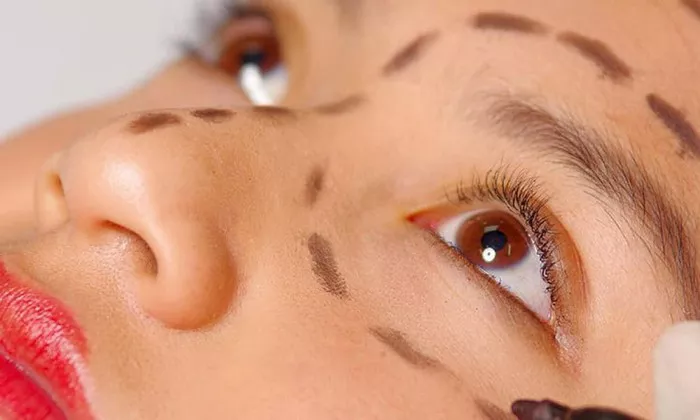Eyelid surgery, or blepharoplasty, is a common cosmetic procedure that is designed to improve the appearance of the eyelids. The surgery can be performed on the upper or lower eyelids, or both, and is typically done on an outpatient basis. While the surgery itself is relatively quick, recovery from eyelid surgery can take several weeks. In this article, we will explore what to expect during the recovery period after eyelid surgery, including the timeline for healing, tips for managing discomfort, and potential complications to watch for.
Timeline for Recovery from Eyelid Surgery
The recovery period after eyelid surgery can vary depending on the extent of the procedure and the individual patient’s healing process. However, there are some general guidelines that can give you an idea of what to expect during the recovery period.
Immediately After Surgery
After the surgery is complete, you will be taken to a recovery area where you will be monitored until you are ready to go home. Your eyes may be covered with gauze or bandages to protect the incisions, and you may experience some discomfort and swelling.
The First Few Days
During the first few days after surgery, it is important to rest and avoid any strenuous activity. You may experience some swelling, bruising, and discomfort, which can be managed with pain medication and cold compresses. Your surgeon may also recommend that you keep your head elevated and avoid bending over or lifting heavy objects to help reduce swelling.
The First Week
During the first week after surgery, you may begin to feel more comfortable and the swelling and bruising may begin to subside. However, it is still important to avoid any strenuous activity or heavy lifting. Your surgeon may also recommend that you avoid wearing contact lenses or eye makeup for the first week.
The Second Week
By the second week, most patients are able to return to work and resume normal activities. However, it is important to continue to avoid any strenuous activity or heavy lifting, and to avoid exposing your eyes to direct sunlight or wind. Your surgeon may also recommend that you continue to avoid wearing contact lenses or eye makeup for a few more weeks.
The Third and Fourth Weeks
By the third and fourth weeks, most patients have fully recovered from eyelid surgery and can resume all normal activities. However, it is important to continue to avoid any activities that could put pressure on the eyes, such as rubbing or scratching them. Your surgeon may also recommend that you continue to avoid wearing contact lenses or eye makeup for a few more weeks to ensure that your eyes have fully healed.
Tips for Managing Discomfort During Recovery from Eyelid Surgery
While discomfort is normal during the recovery period after eyelid surgery, there are several things you can do to manage it and help speed up the healing process.
Use cold compresses: Applying cold compresses to your eyes can help reduce swelling and discomfort. You can use a bag of frozen peas or a cold gel pack wrapped in a towel to apply cold compresses.
Take pain medication: Your surgeon may prescribe pain medication to help manage discomfort during the recovery period. Be sure to follow your surgeon’s instructions carefully and take the medication as directed.
Keep your head elevated: Keeping your head elevated can help reduce swelling and discomfort. You can prop yourself up with pillows or sleep in a recliner to keep your head elevated.
Avoid smoking: Smoking can slow down the healing process and increase the risk of complications after surgery. If you smoke, it is important to quit before and after the surgery.
Follow your surgeon’s instructions: Your surgeon will provide you with detailed instructions on how to care for your incisions and what to expect during your recovery. It is important to follow these instructions carefully to ensure that you heal properly and minimize the risk of complications.
Potential Complications to Watch For
While eyelid surgery is generally safe, there are some potential complications that you should be aware of. These may include:
Infection: Infection is a rare but serious complication that can occur after eyelid surgery. Signs of infection may include fever, redness, swelling, and discharge from the incision site.
Bleeding: Bleeding is another rare but serious complication that can occur after eyelid surgery. If you experience excessive bleeding or bruising, contact your surgeon immediately.
Dry eyes: Some patients may experience dry eyes after eyelid surgery, which can be managed with eye drops or artificial tears.
Changes in vision: In rare cases, eyelid surgery can cause changes in vision. If you experience changes in vision, contact your surgeon immediately.
Conclusion
Recovery from eyelid surgery can take several weeks, but with proper care and attention, most patients are able to fully recover and enjoy the results of their surgery. If you are considering eyelid surgery, be sure to schedule a consultation with a qualified plastic surgeon to discuss your goals and expectations for the surgery, and to learn more about what to expect during the recovery period. By following your surgeon’s instructions and taking care of yourself during the recovery period, you can help ensure that you heal properly and minimize the risk of complications.


